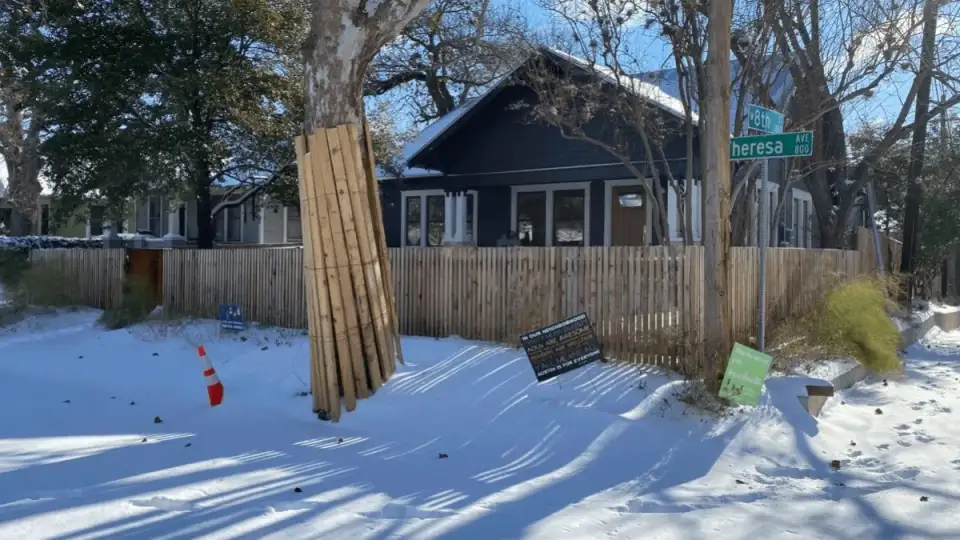
Passive survivability is a trademark characteristic of Passive House buildings that doesn’t get the attention it deserves until a major storm hits. The ice and snow, nights of freezing temperatures, and power failures are currently making life miserable in Texas, but some are riding out these multiple disasters a little more comfortably than others.
“The house next to ours was identical to what ours was before our Passive House remodel,” says Trey Farmer, architect and principal of Forge Craft Architecture + Design in Austin, Texas. “After 12 hours without power, it was below freezing inside in the home next door.” Meanwhile, Farmer’s home, which had been retrofitted to meet Passive House performance levels, had dropped to 60 degrees inside after the first night without power. The home inched up to 63 degrees the next day, and then after another night with temperatures below 10 degrees and no electricity, indoor temperatures skidded to 53 degrees.
While 53 degrees is not comfortable, Farmer is happy with his home’s performance, given the harsh circumstances. “The conditions are well beyond the design criteria,” he points out. The major downside that Farmer has experienced from losing electrical power is that his ERV isn’t working, and, with the ventilation unit not providing a constant stream of fresh air, indoor CO2 levels climbed. Because his family includes his very young son, they moved to a friend’s home with power after the second night. (Had moving to a friend’s home not been an option, the alternative would have been to open windows periodically to reduce CO2.)
Fortunately for him, even while he’s been away, his Passive House remodel has brought another big advantage: it has greatly lessened any worries he might have had about a major problem facing many Austin residents—burst plumbing pipes in homes without power.
So far just theoretically, Farmer also has had the opportunity to see how his Passive House would perform during prolonged power outages in summer conditions. He worked with a University of Texas research team who compared his Passive House remodel to a code-built house, and Farmer’s Passive House kept the home much cooler and less humid than the code-built house.
During this week’s extreme winter event, Mark Larson, a builder and project manager with CG&S Design-Build in Austin, also has been grateful for the new Passive House he built for himself and his wife in Austin’s Spicewood neighborhood. They have been fortunate to experience only rolling blackouts that lasted 4 to 5 hours at most. “Our house did really well during them, only dropping by about 2 or 3 degrees,” he says.
When he was building his own home, he had the ideal client who didn’t need to be persuaded about deciding to aim for Passive House levels of performance. “I naturally wanted to build the best house I knew how to build,” he says, adding, “The house has definitely done very well during the storm.” However, he hopes people will choose to build Passive Houses in Texas for reasons unrelated to severe weather events. “I hope that’s not the reason people will choose Passive House, because I hope not to see this kind of weather in Texas again,” he states. He is not alone in that wish.
The increased emphasis on efficiency that the Passive House design principles bring to all buildings could have lessened the load on the energy grid in the first place, as some point out. Dennis Wedlick is an architect known for his rural Habitat for Humanity Passive House projects designed to maximize sustainability, survivability in blackouts, and mitigating energy poverty in rural communities.
Wedlick designs for the Hudson Valley climate where blackouts are frequent due to wind storms, fallen trees, and extreme weather. “Improving the quality of housing for people to the highest possible standard is important going forward,” Wedlick says. “We have to deal with many problems that are due to climate change that are not just simply summers getting hotter.”
One of those concerns, especially given that states like New York are moving toward electrification by 2030, is: How can we ensure that the energy infrastructure will support mass building electrification? Efficiency can play a critical role in not overloading infrastructure, triggering destructive and deadly blackouts. “Passive House demonstrates that when we realize that we all have to think about [designing, building, heating, and cooling] together it is all more cost-effective, resilient against climate, and problems like infrastructure failures,” Wedlick says.